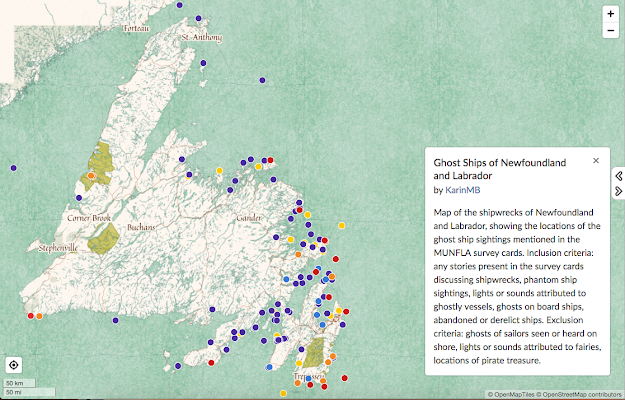 |
| Image courtesy of Karin Murray-Berquist. |
In this episode, PhD candidate Karin Murray-Berquist shares her research on phantom ship sightings in Newfoundland and Labrador. Karin is a PhD Candidate in the Folklore Department at Memorial University. After working in Memorial University's Folklore and Language Archive (MUNFLA), she became fascinated by stories of shipwrecks and ghost ships. Karin created an online map that shows the location of all the ghost or phantom ship stories she’s found in the archive so far.
 |
| Photo courtesy of Karin Murray-Berquist. |
In this episode, we talk about Karin’s research and dive into a few phantom ship stories from the Baccalieu Trail region.
This
episode is part of a special series about the Baccalieu Trail region of
Newfoundland and Labrador. Join us as we explore the hidden gems of the
Baccalieu Trail- from stories of phantom ship sightings to local art
and history.
###
Living Heritage is about people who are engaged in the heritage and culture sector, from museum
professionals and archivists, to tradition bearers and craftspeople - all those who keep history alive at the
community level. The show is a partnership between HeritageNL and CHMR Radio.
Theme music is Rythme Gitan by Latché Swing.













